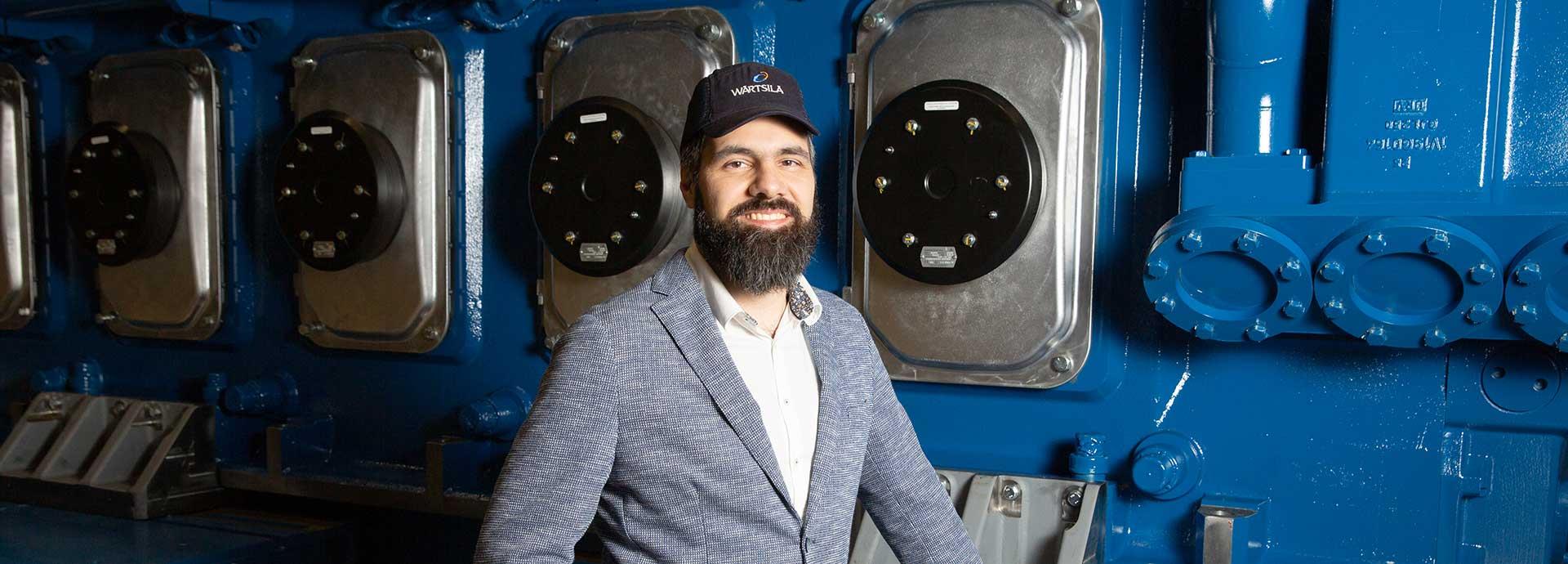

In a world where environmental impact is influencing customer decisions, cruise lines are striving to be eco-friendly while remaining affordable. Stefano Cantarut, Segment Manager Cruise & Ferry, Wärtsilä, explains how the industry can meet these twin objectives.
1. How are customer expectations reshaping the cruise industry?
The cruise market offers exotic and interesting destinations and first-class experiences. The number of vessels is increasing and owners are facing requirements and demands from regulators, society and destinations to become more environmentally sensitive.
It is really a cultural change that is impacting areas of business that until recently have not been considered in an integrated, optimised way.
2. What are the challenges that the cruise market faces due to environmental factors?
From the environmental point of view, the cruise market faces four clear challenges:
- public image
- global emission and waste regulation
- location-specific emission regulations
- future regulations
While all vessels have to cope with emission requirements, the cruise market needs to adhere to additional location-specific emissions requirements. For example, the heritage Norwegian Fjords will be accessible only to zero-emission vessels by 2026, while the Arctic and Antarctic are already strongly regulated regarding any kind of visible smoke.
Everyone in the market is expecting that regulations regarding all kinds of emissions (not just exhaust gases but noise through water, food waste, etc.) will become more stringent in the next few years. The possibility to access restricted areas will also become more difficult. Last, but not least, public opinion is starting to focus on the sustainability of the cruise industry, so owners and operators have to send a clear message regarding the sustainability of their ships. This is something that has never happened before.
3. How is the industry responding to these challenges?
The industry is realising that the ‘standard diesel vessel’ is not an option anymore. In order to reduce the environmental footprint of a vessel, owners are looking to invest in increasing the total efficiency of the vessel to avoid energy waste and the resulting emissions.
The industry is looking to invest in alternative solutions today to ensure that it is capable of operating vessels for the next 20-30 years. This means having a flexible solution that allows for modification to utilise future fuels on the road to zero emissions. At Wärtsilä, we are heavily focused on conducting feasibility studies on a variety of fuel and energy alternatives to support this flexibility strategy.
4. How is Wärtsilä positioned in this market?
Wärtsilä is constantly investing in improving the environmental footprint of its products, increasing efficiency, and consequently reducing emissions. We do not focus only on improving the performance of a single product but look at the total solution.
We believe that a true and significant improvement of the vessel’s total footprint can only be achieved by having a ‘system-wide’ approach. That entails improving the integration between different elements of the vessel, which leads to achieving a total reduction in emissions and waste that is higher than the sum of its parts.
5. What are some Wärtsilä solutions that will allow the cruise business to be more environmentally-friendly and also save money?
Considering that the key parameter to obtain a true reduction in emissions is the fuel used, Wärtsilä is delivering complete fuel flexibility in the market. We know that the combustion engine will continue to play a key role in the future. But the type of fuel that will be used is still unpredictable. No matter what the fuel of the future is, Wärtsilä will supply engines that will be able to efficiently utilise them. Therefore, we can assure our customers the flexibility they require to continue to operate worldwide in an economical and sustainable way.
Wärtsilä HY is a key solution in this context. It is the next step in a ship’s evolution because it’s not just any hybrid system but an ‘integrated hybrid system’. Wärtsilä HY is a combination of four elements: the engines (and/or other energy sources, like fuel cells), the energy storage system, the power electronics, and an Energy Management System that is the brain of the whole system.
In a standard hybrid, each element acts in its standard way, completely ignoring the dynamics of the other elements that make up the system. In an integrated hybrid system, however, each element ‘knows’ about the presence of other elements, leading to improvement in the entire system’s performance.
6. What impact does hybrid technology have on cruise operations?
When implemented, Wärtsilä HY helps raise a vessel’s total efficiency, resulting in reduced emissions. This is achieved by making each element of the system work in synergy with the others, expanding the range of optimal working conditions of the entire power plant of the vessel.
For example, with Wärtsilä HY, in certain circumstances, it is possible to reduce the total number of running engines, or to make the engines operate at their lowest emission production point. With Wärtsilä HY, it is also possible to operate without engines in zero-emission ‘green mode’ for a certain amount of time, depending on the vessel.
7. How is Wärtsilä’s approach different from the industry at large?
Wärtsilä is in a unique position because no other company can truly integrate, deliver, and support such a comprehensive portfolio of products and services across the entire lifecycle of a vessel.
Every day, working with customers, we collect and analyse a huge amount of data regarding the specific vessel operations for two main purposes:
Real-time insight of vessel operations in order to increase safety, performance, and reliability
Next-generation improvements. By collecting statistical data, we gain insight into day to day operation and identify critical areas of improvement for future vessel development

